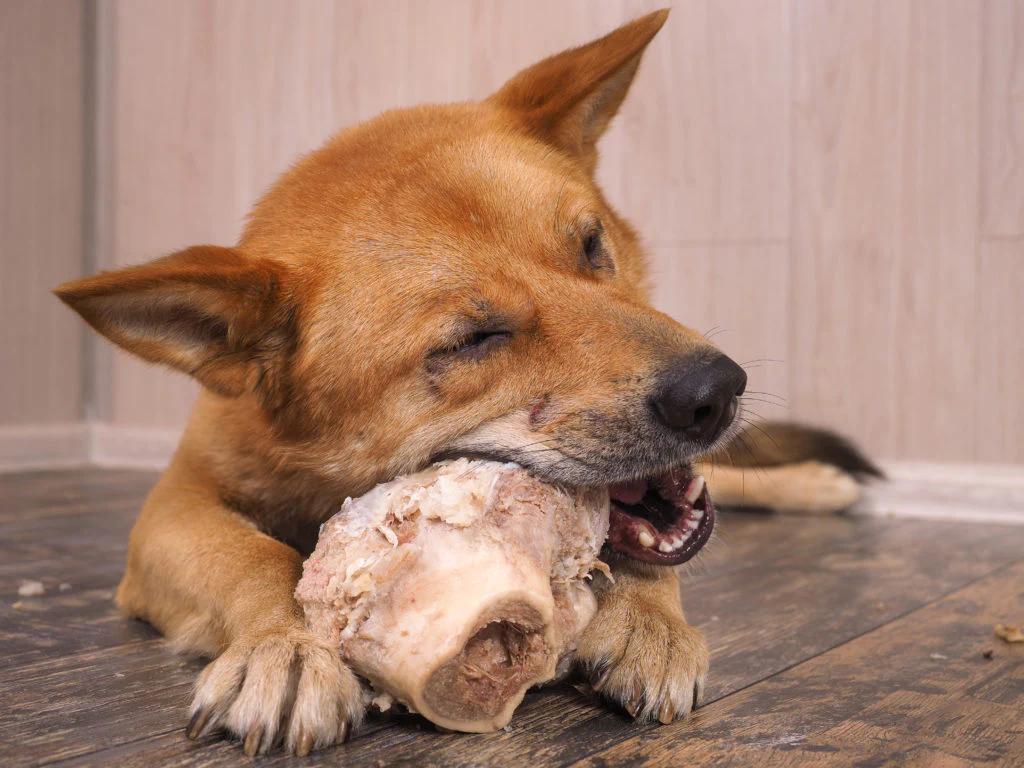Canine Construction: Stability in Bone, Flexibility in Muscle
- bartonj63
- May 20, 2024
- 4 min read
Updated: Jan 28
Each dog, regardless of their shape, size or breed has a skeletal and muscular system which is perfectly scaled to their body. These systems contain approximately 700 muscles and 320 bones (depending on length of tail) and function harmoniously together by means of a hidden two-way conversation.
We are used to seeing bones as white structures in x-rays or plastic skeletons during Halloween, and muscles as slabs of meat on a plate. However, the skeletal and muscular system are very complex! Let us take a deep dive underneath the dog’s skin to discover the complex world of bones and muscles.
Bones do amazing things!
The skeletal system has many structural functions. Dogs like most vertebrates have an endoskeleton which acts as a rigid and robust, internal scaffold upon which the rest of the body is constructed and supported. The skeletal system protects the central nervous system (brain and spinal cord) and shields the internal organs of the body.
Bones are alive!
Bones have more than just a structural role. Bone is a living tissue, if we cut them, they bleed, if we break them, they hurt. Throughout a dog’s life their bone grows with them, adapting and changing. Old bone tissue is constantly being replaced by new bone tissue, through a process called remodelling. Osteoclasts, bone destroying cells found in the periosteum (tough, hard, outer surface of bone), produce an acid to erode the bone and make way for osteoblasts, new bone forming cells. This helps fine-tune the bone’s design (to meet changing mechanical needs and repair micro-damages in the bone’s matrix) and preserves the structural quality of the dog’s skeletal system.
Bones are perfectly formed!
While bone may look quite solid, it is a lightweight construction which uses minimum material for maximum stability. When you see a bone sliced in half, for example animal bones in our cooked meat or those our dogs like to chew on, you will see two different types of tissue.
Compact bone - the thick, hard outer layer has a dense, ivory-like appearance and provides strong, structural support.
Cancellous bone - the more delicate, weaker inner tissue, resembles honeycomb and is easier to fracture than compact bone. However, it is designed to cope with the forces of contraction and pressure, enabling it to stay lightweight yet stable.
The internal spaces of bone are filled with bone marrow, a soft spongy tissue, which houses fat and blood-producing cells. Red marrow manufactures red blood cells (oxygen carriers), white blood cells (to fight infection) and platelets (for clotting blood). Yellow marrow stores fats.
Bones & joints!
Bones also enable movement by articulating together to form a range of synovial joints. For example, the ball-and-socket joints of the hips and shoulders allow for rotation, whereas the hinge joints of the elbows and stifles allow for flexion and extension. Articular cartilage, a strong and flexible fibrous tissue, covers the articulating surfaces of bone. It acts as a shock absorber and allows the bones to slide over each other. The articulating surfaces of bone are separated by a joint cavity filled with synovial fluid. This acts as a lubricant and nourishes the cartilage. Synovial joints are usually held together by ligaments, bands of tough fibrous tissues, which are strong, with minimal elasticity. As a result, ligaments stabilise and support joints.
Marvellous Muscles!
The muscular system accounts for 45% to 50% of a dog’s body weight. It largely consists of skeletal muscle which produces immense power and movement by repeated contraction and relaxation. It also helps maintain your dog’s posture and body position by providing information to the nervous system (via sensory receptors), about the tension and length of the muscle.
Muscle construction!
Skeletal muscle is under the voluntary control of the dog and is constructed entirely of individual, elastic, muscle fibres (cells). These cells are cylindrical in shape and stretch the entire length of the muscle. They are arranged into bundles called muscle fascicles and can contain between 10 and 100 muscle fibres, depending on the strength and size of the muscle. Next time you cut into a juicy piece of steak, look at how these fibres are arranged. The fascicles are then gathered together to form the main belly of the muscle (thick fleshy part). The belly of the muscle thins at each end to form tendons which attach the muscle to bone.
Muscle pump!
Skeletal muscle also supports the circulatory system. A collection of skeletal muscles called the skeletal-muscle pump increases venous return (flow of deoxygenated blood from the extremities of the dog’s body to the heart via veins). As the muscle contracts it presses on the veins, pushing its one-way valves open. This supports blood flow towards the heart. When the muscle relaxes again the valves close preventing the blood from flowing backwards.
Muscle & temperature!
Skeletal muscle produces 70% of a dog’s body heat, via contractions. The average temperature of a healthy canine is 38 degrees Celsius. During exercise your dog’s body temperature will increase (overheat). Muscle contraction along with blood flow controls the dog’s body temperature by taking heat from the core and redirecting it to the skin where the heat is expelled. When the temperature of your dog becomes too cold skeletal muscle will involuntary contract and relax (shiver) to generate heat.
I told you bones and muscles are fascinating!
In my next blog we will look at the hidden, intimate relationship between muscle and bone (as neither system is able to function without the other) and why skeletal and muscular systems are known collectively as the musculoskeletal system.








Comments